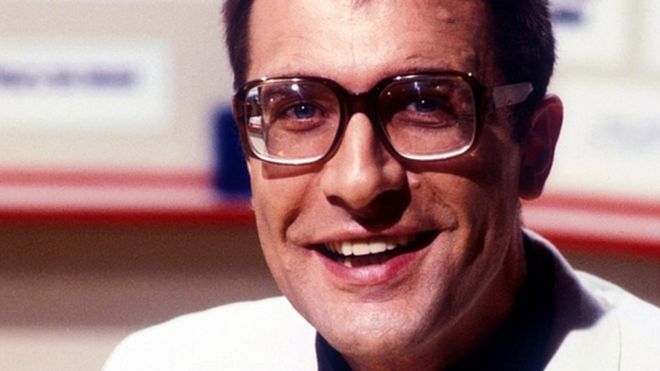
In recent years, it has become increasingly common to frame the climate change problem as a kind of countdown each year we emit more carbon dioxide, narrowing the window for fixing the problem, but notquite closing it yet. After all, something could still change. Emissions could still start to plunge precipitously. Maybe next year.
This outlook has allowed, at least for some, for thepreservation of a form of climate optimism,in which big changes, someday soon, will still make the difference. Christiana Figureres, the former head of the United Nations Framework Convention on Climate Change, recently joinedwith a group of climate scientists and policy wonksto statethere are 3 years left to get emissions moving sharplydownward. If, that is, were holding out hope oflimiting the warming of the globe to below 2 degrees Celsius (3.6 degrees Fahrenheit) above pre-industrial temperatures, often cited as the threshold where dangerous warming begins (although in truth, thats a matter of interpretation).
Yet a battery of recent studies call into questio n even that limitedoptimism. Last week, a group of climate researcherspublished researchsuggesting the climate has been warming for longer than we thought due to human influences in essence, pushing the so-called preindustrial baseline for the planets warming backwards in time. The logic is clear: If the Earth has already warmed more than we thought due to human activities, then theres even less remaining carbon dioxide that we can emit and still avoid 2 degrees of warming.
 The law, signed by Mr Putin, was passed by Russia's parliament last week and will now come into force on 1 November. A second law to ban anonymous use of online messaging services will take effect on 1 January next year. It would make it easier for the state to snoop on citizens' browsing habits, one internet security expert suggested. The laws signed by Mr Putin are meant only to block access to "unlawful content" and not target law-abiding web users, the head of the lower house of parliament said, according to the RIA news agency. One feature of the second law is the provision to require internet operators to restrict users' access if they are found to be distributing illegal content.
The law, signed by Mr Putin, was passed by Russia's parliament last week and will now come into force on 1 November. A second law to ban anonymous use of online messaging services will take effect on 1 January next year. It would make it easier for the state to snoop on citizens' browsing habits, one internet security expert suggested. The laws signed by Mr Putin are meant only to block access to "unlawful content" and not target law-abiding web users, the head of the lower house of parliament said, according to the RIA news agency. One feature of the second law is the provision to require internet operators to restrict users' access if they are found to be distributing illegal content.
 These tiny creatures, sometimes called water bears, can survive radiation, freezing, extreme dehydration and even the vacuum of space. Researchers have now decoded the DNA of two species of tardigrade and uncovered the genes that allow them to be revived after desiccation. The study has been published in the journal, PLOS Biology. Just a millimetre or less in size, tardigrades are believed to be the toughest creatures on Earth. A recent study found that they could survive almost any cosmic disaster that could hit the planet.
These tiny creatures, sometimes called water bears, can survive radiation, freezing, extreme dehydration and even the vacuum of space. Researchers have now decoded the DNA of two species of tardigrade and uncovered the genes that allow them to be revived after desiccation. The study has been published in the journal, PLOS Biology. Just a millimetre or less in size, tardigrades are believed to be the toughest creatures on Earth. A recent study found that they could survive almost any cosmic disaster that could hit the planet. The search giant created thousands of virtual victims of ransomware to expose the payment ecosystem surrounding the malware type. Most of the money was made in 2016 as gangs realised how lucrative it was, revealed a talk at Black Hat. Two types of ransomware made most of the money, it said, but other variants are starting to emerge.
The search giant created thousands of virtual victims of ransomware to expose the payment ecosystem surrounding the malware type. Most of the money was made in 2016 as gangs realised how lucrative it was, revealed a talk at Black Hat. Two types of ransomware made most of the money, it said, but other variants are starting to emerge.
 Search engine giant Google has introduced a much-needed SOS Alerts feature in its Maps and Search applications to offer real-time critical information to users on natural disasters nearby.
Search engine giant Google has introduced a much-needed SOS Alerts feature in its Maps and Search applications to offer real-time critical information to users on natural disasters nearby. Instagram was highlighted as having become the vehicle most used for mean comments. Seven per cent of young social network users said they had been bullied on the Facebook-owned photo app. That compared to a figure of 6% for Facebook itself, 5% for Snapchat and 2% for Twitter and YouTube. One expert said children were growing up in "a culture of antagonism". Instagram said it encouraged users to report bullying content.
Instagram was highlighted as having become the vehicle most used for mean comments. Seven per cent of young social network users said they had been bullied on the Facebook-owned photo app. That compared to a figure of 6% for Facebook itself, 5% for Snapchat and 2% for Twitter and YouTube. One expert said children were growing up in "a culture of antagonism". Instagram said it encouraged users to report bullying content.



